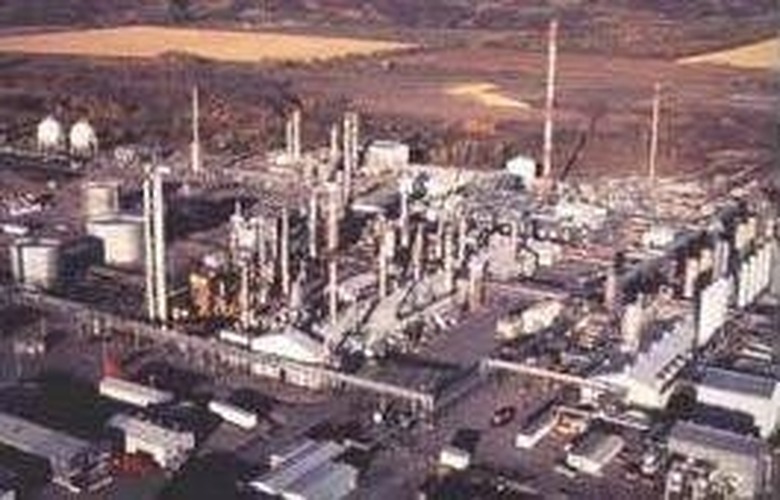How Is Natural Gas Extracted, Processed & Refined?
Extraction
Extraction
Natural gas extraction begins with drilling a well. These wells are purpose-drilled for natural gas, but because natural gas is often found in the same deposits as petroleum, sometimes natural gas extraction is a side-operation of oil extraction, or is pumped back into the well for future extraction. In a typical operation, the well is drilled, a concrete and metal casing is installed into the hole, and a collection pump is installed above it.
Preparation and Transportation
Preparation and Transportation
After being brought up from its subterranean deposit, the raw natural gas is first transported to a collecting point. Here, pipelines from all adjacent wells bring the raw gas together for pre-processing, which removes water and condensates. Then it is almost always pipelined to a processing plant. If this is not feasible, the gas is pumped into an underground storage facility for future pipelining and use. It is too expensive to liquefy raw natural gas for shipment to a refinery, and this is rarely, if ever done.
Processing at the Refinery
Processing at the Refinery
Raw natural gas is mostly made of methane, but also contains a large number of other hydrocarbon gases. The first stage is to remove acid gases by amine or membrane treatment. This acid is usually processed into sulfur products. Then any remaining water is removed, which is followed by the removal of mercury by filtering the gas through activated carbon. Finally, nitrogen and natural gas liquids are taken out by low temperature, cryogenic distillation. This results in the "natural" gas that is used for cooking and heating in homes.
Cite This Article
MLA
Thomas, Edwin. "How Is Natural Gas Extracted, Processed & Refined?" sciencing.com, https://www.sciencing.com/how-is-natural-gas-extracted-processed-refined-12078757/. 29 September 2017.
APA
Thomas, Edwin. (2017, September 29). How Is Natural Gas Extracted, Processed & Refined?. sciencing.com. Retrieved from https://www.sciencing.com/how-is-natural-gas-extracted-processed-refined-12078757/
Chicago
Thomas, Edwin. How Is Natural Gas Extracted, Processed & Refined? last modified March 24, 2022. https://www.sciencing.com/how-is-natural-gas-extracted-processed-refined-12078757/


